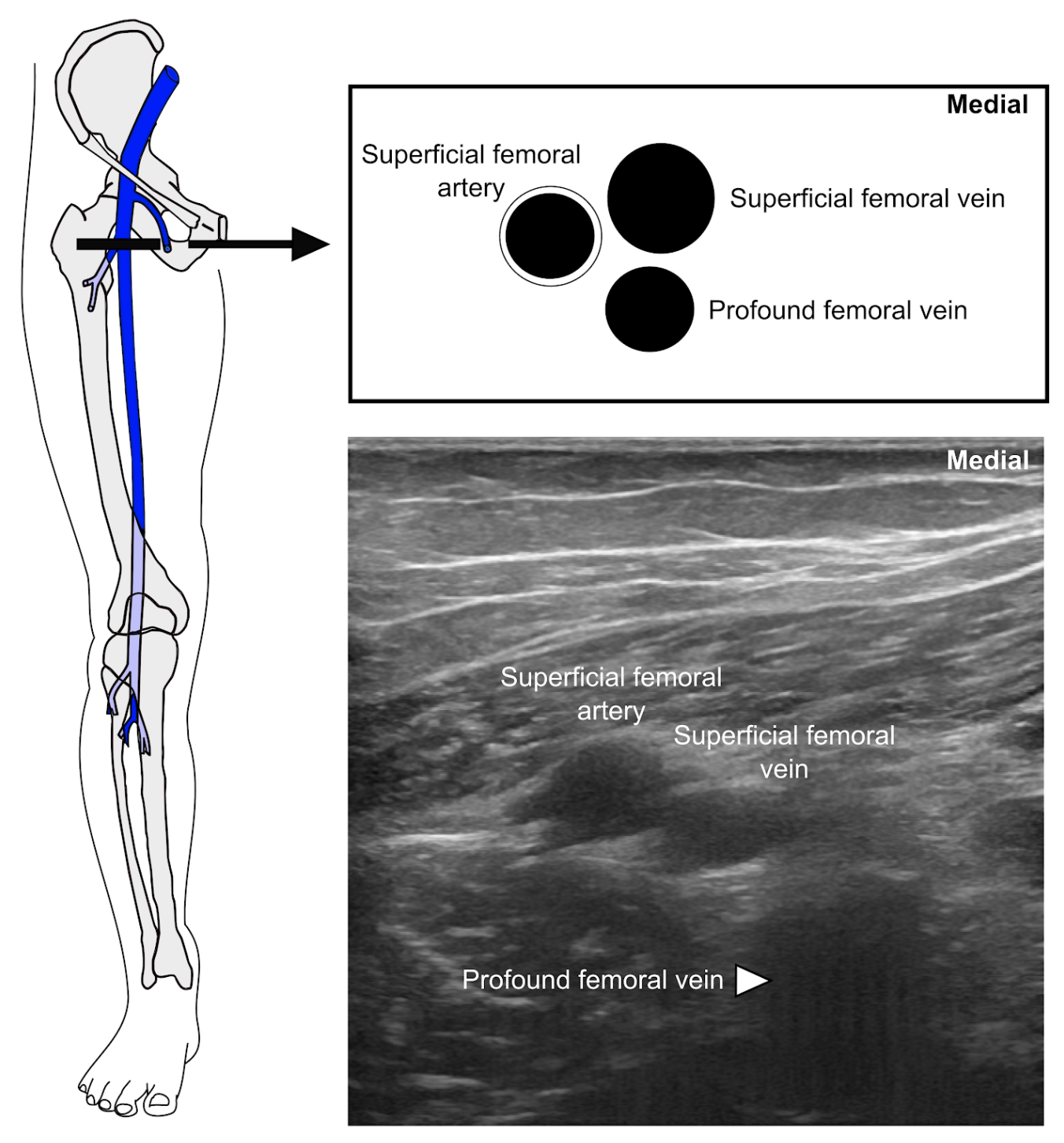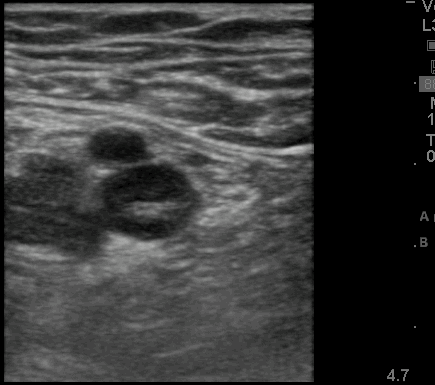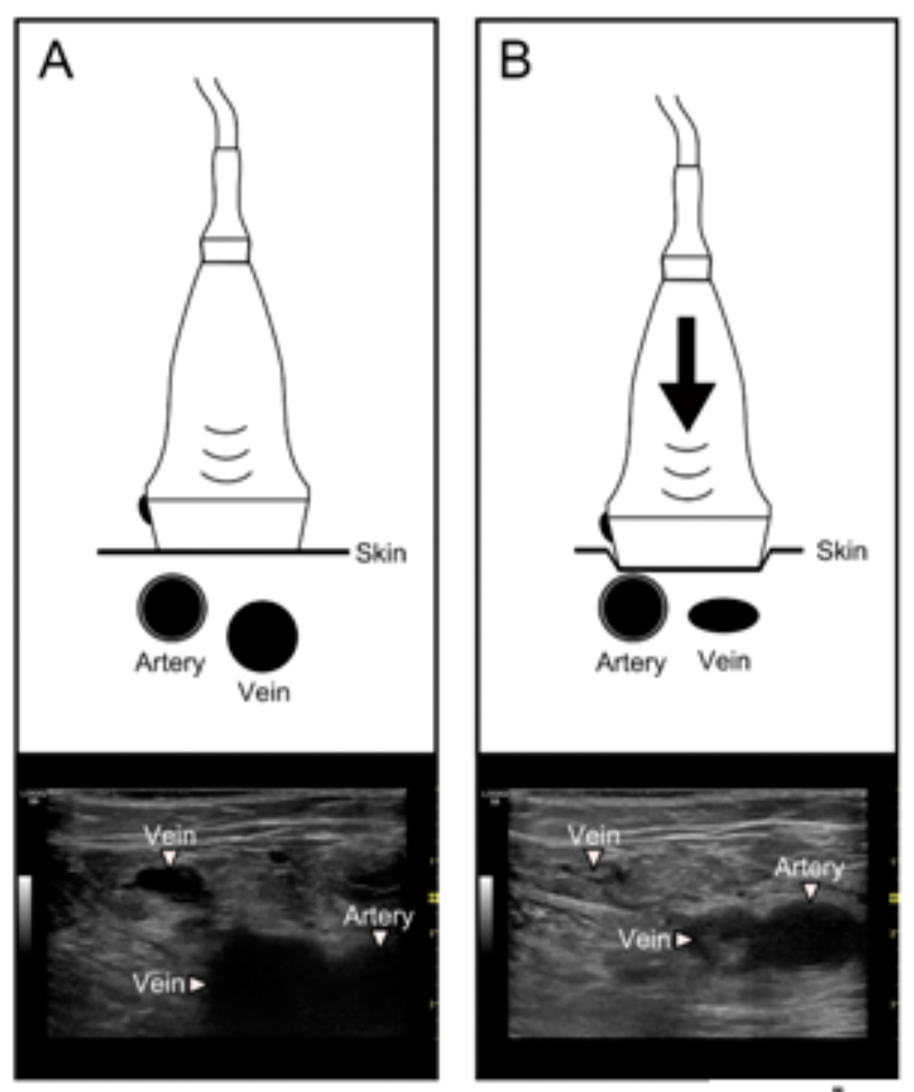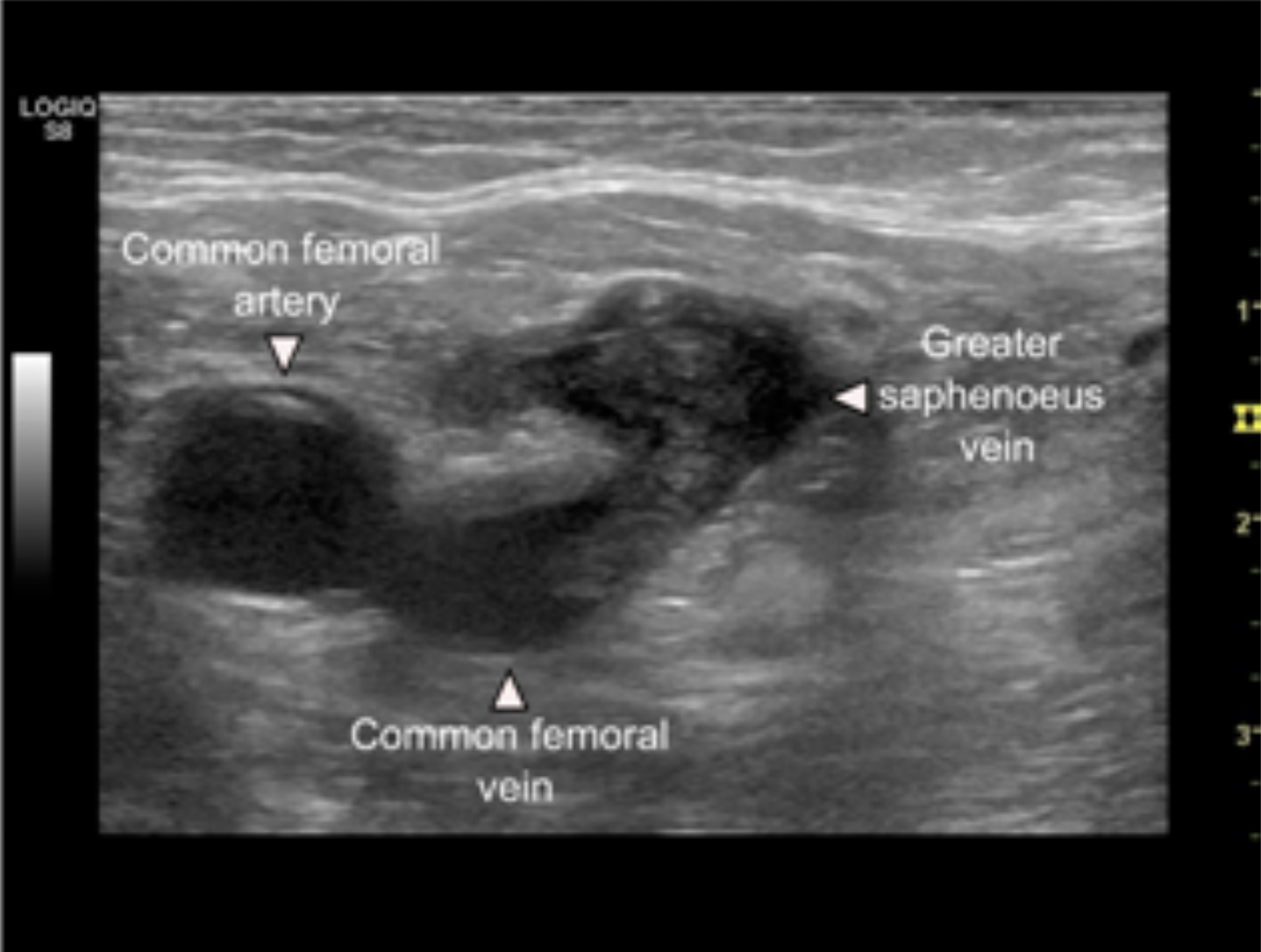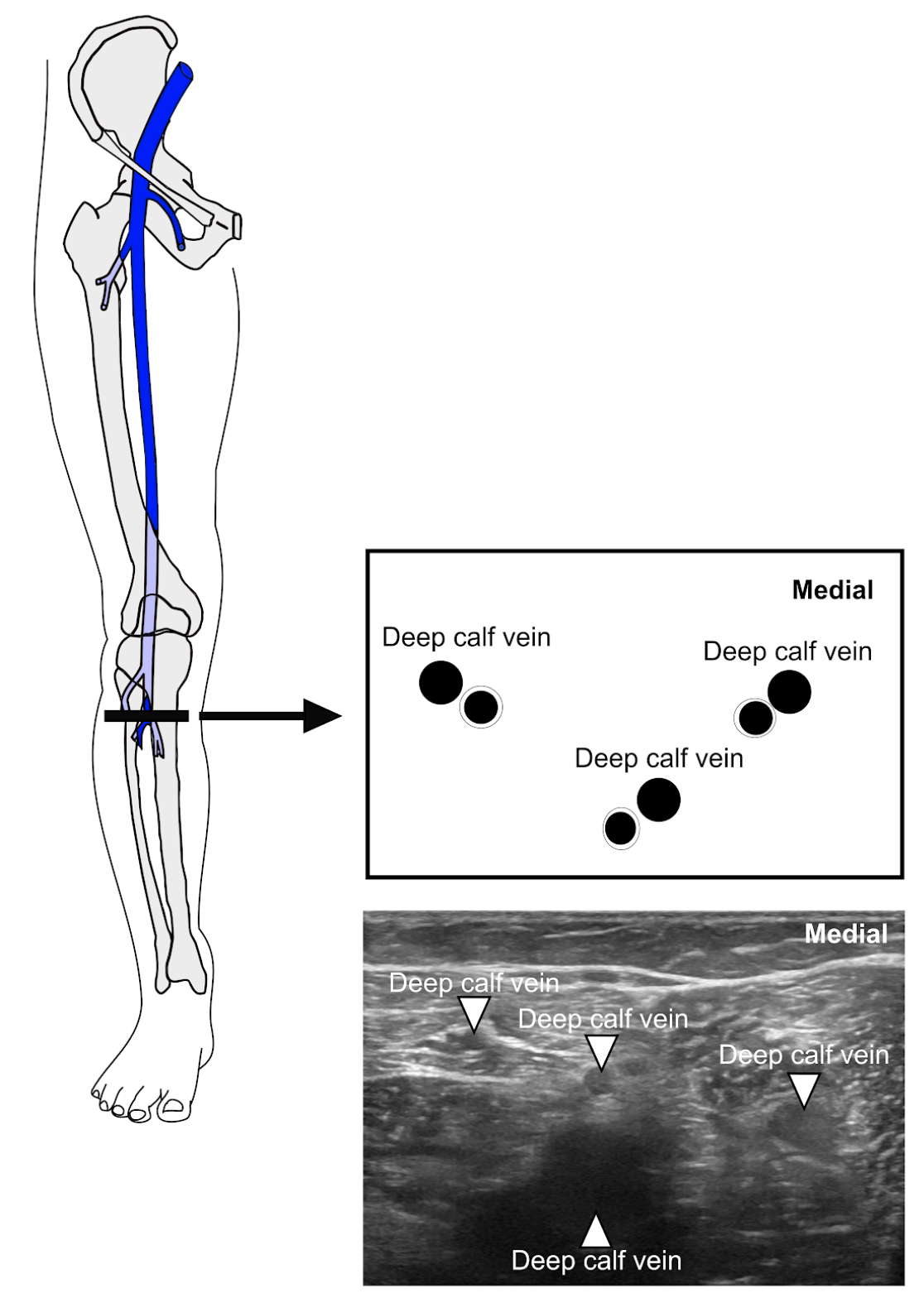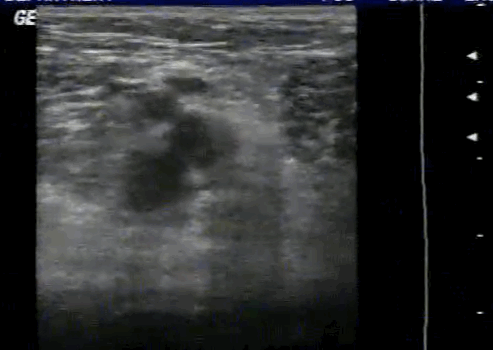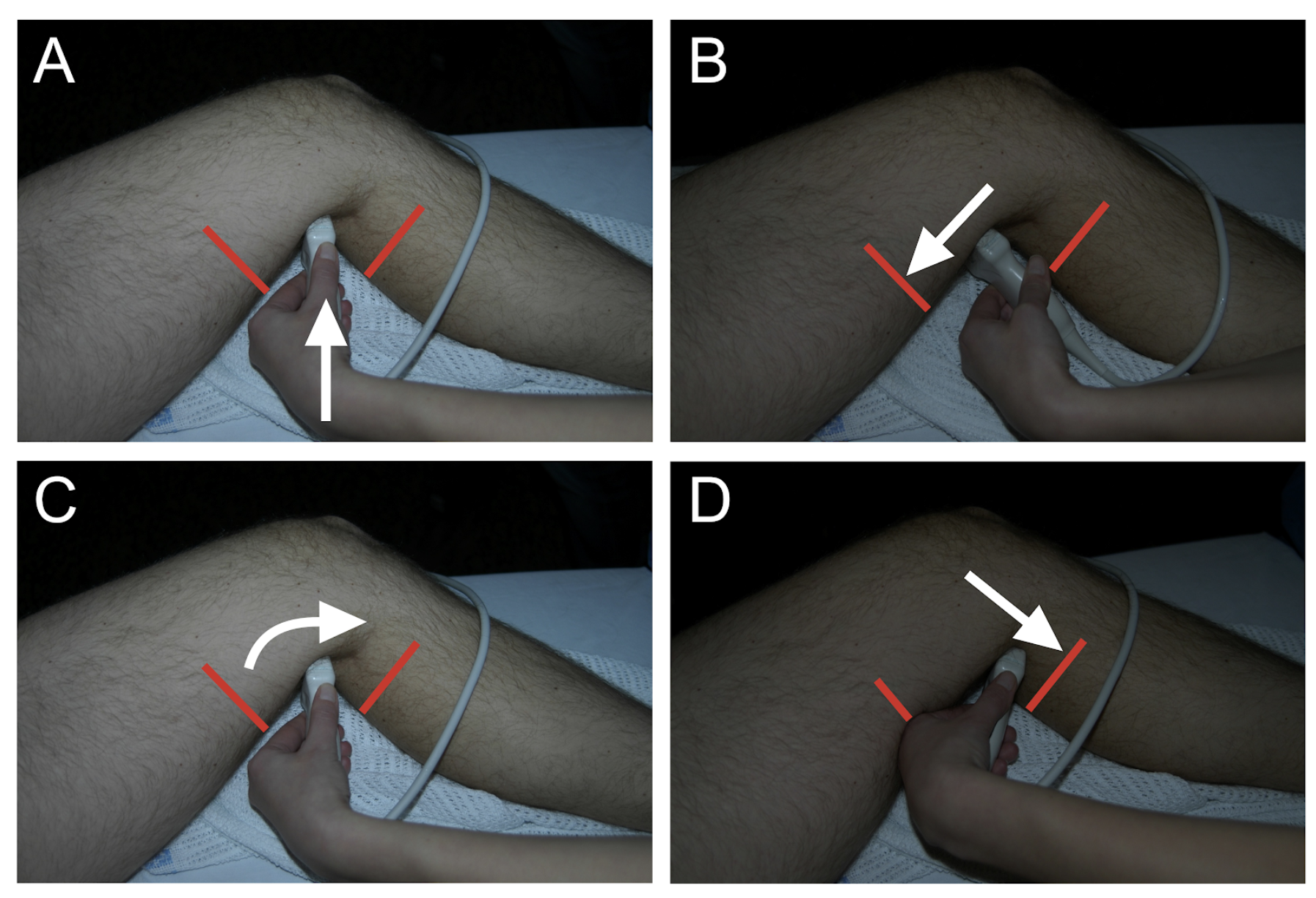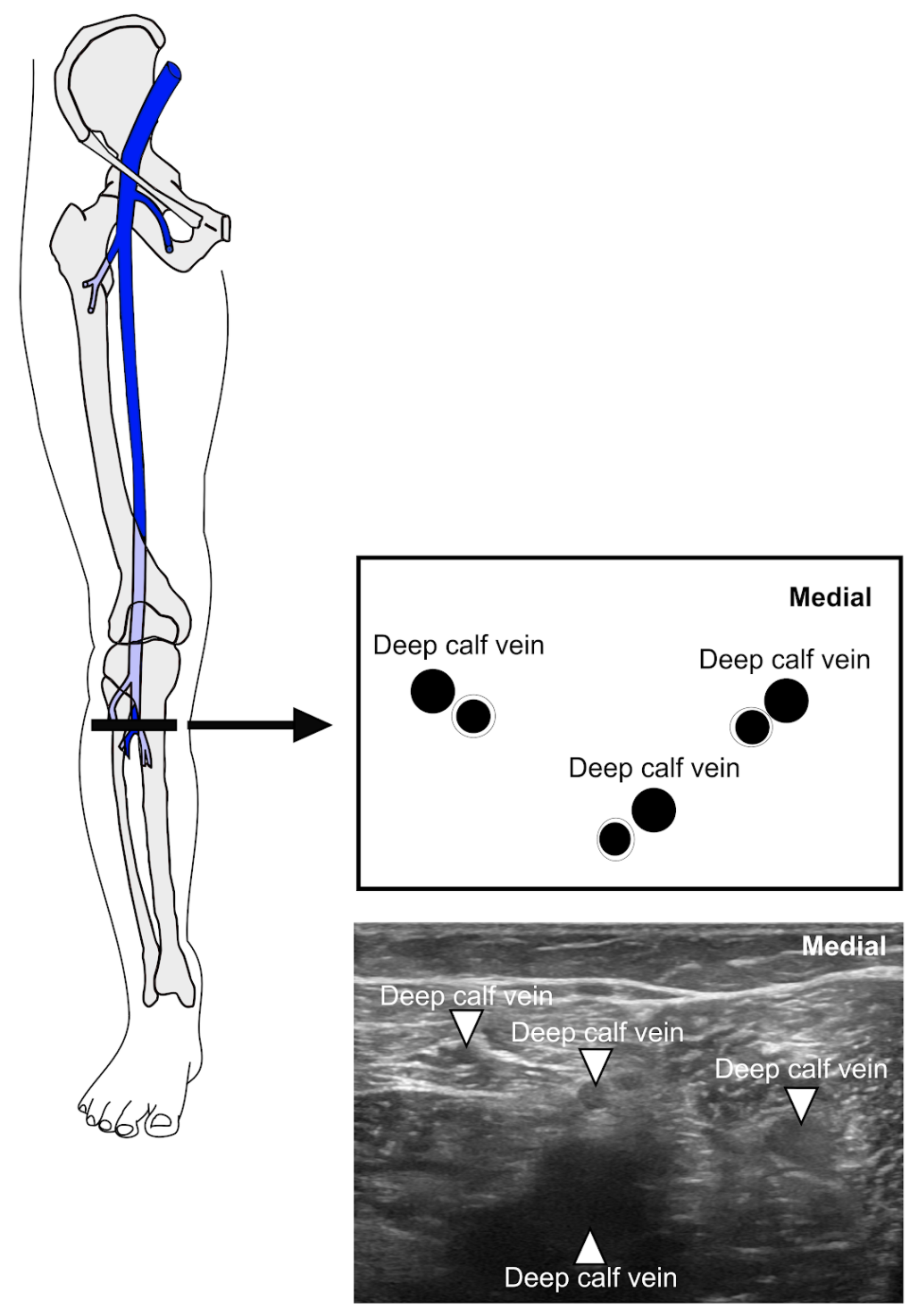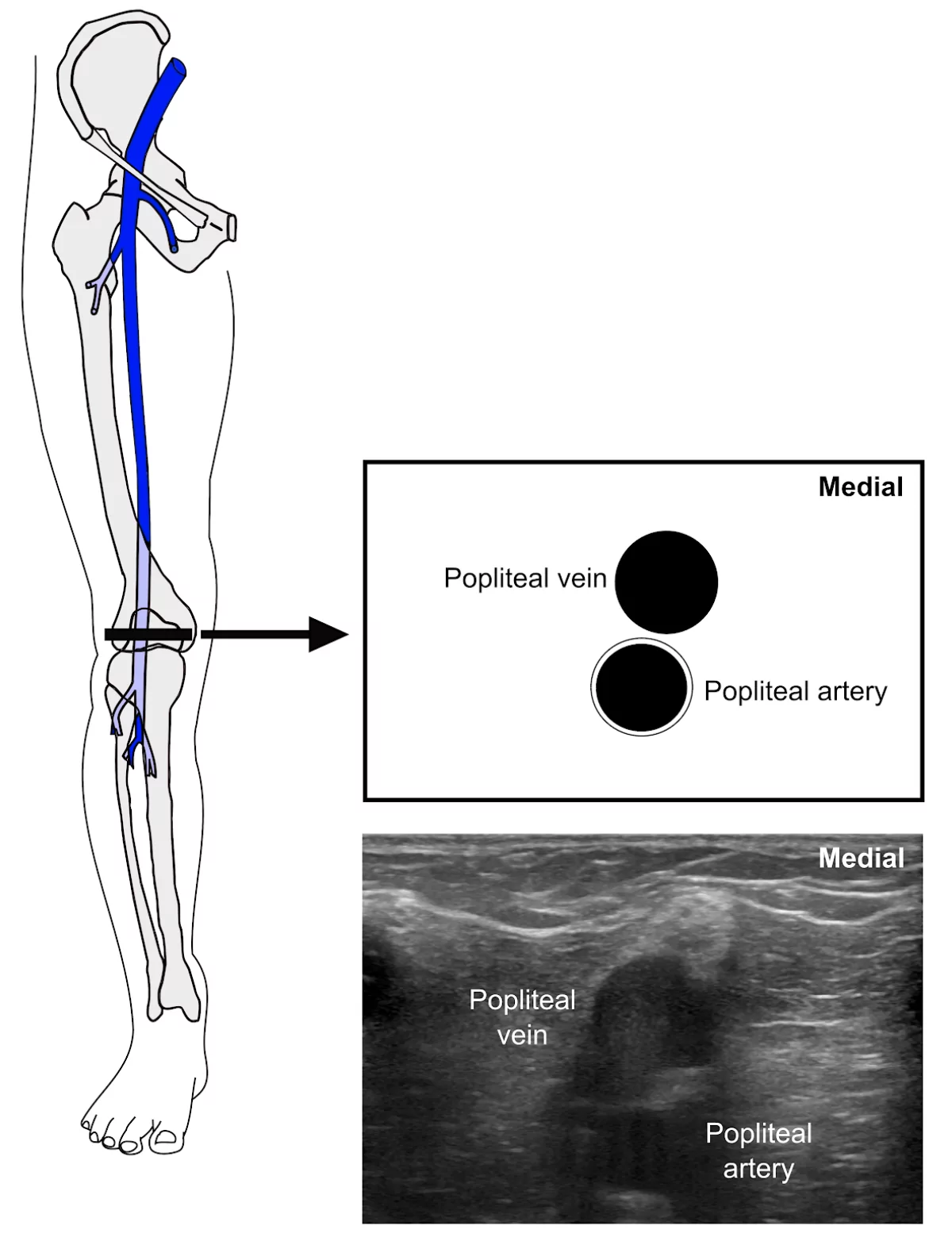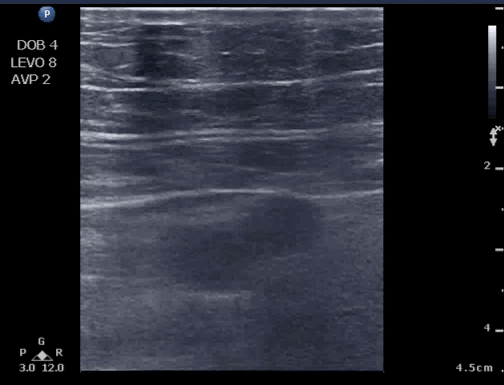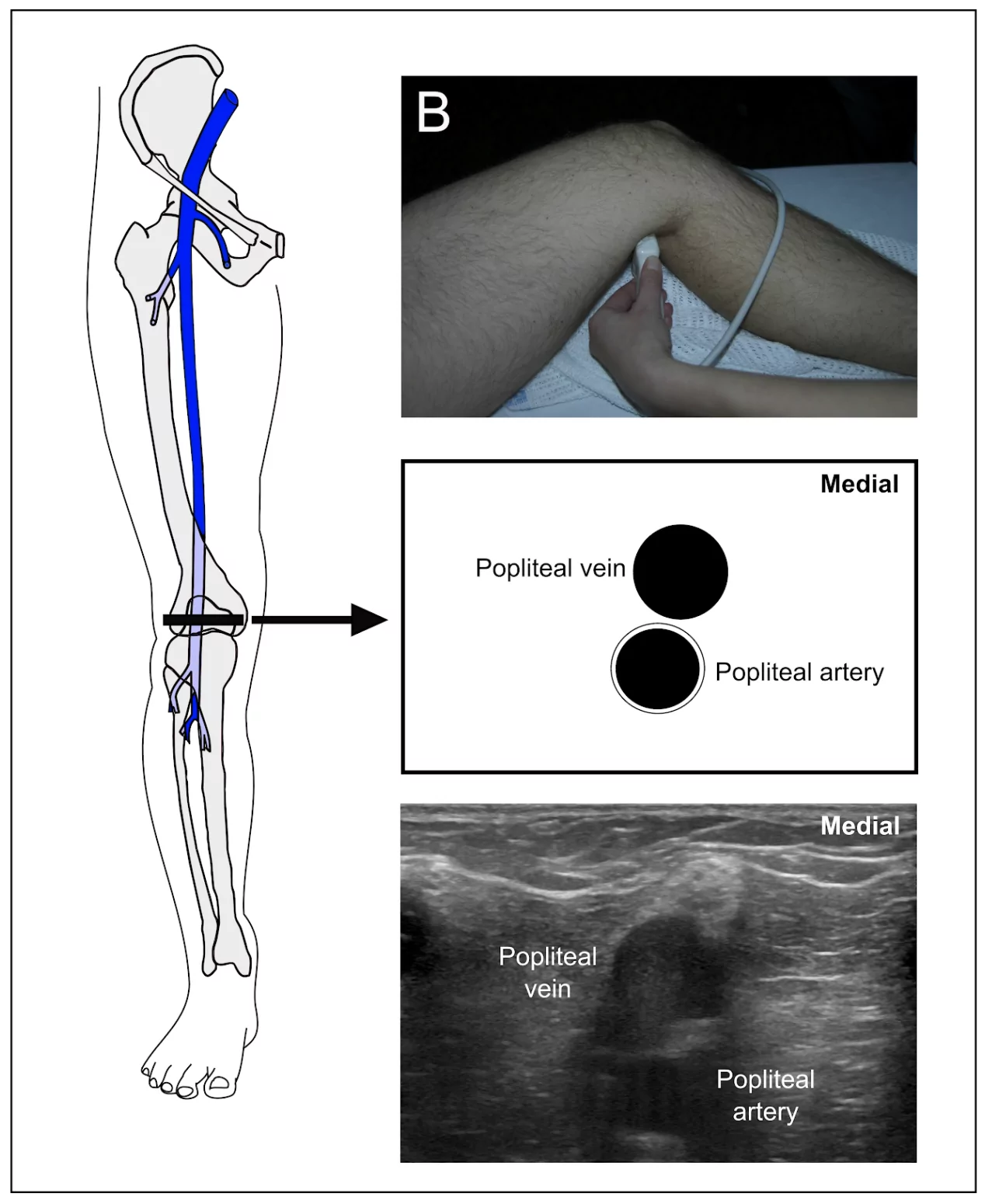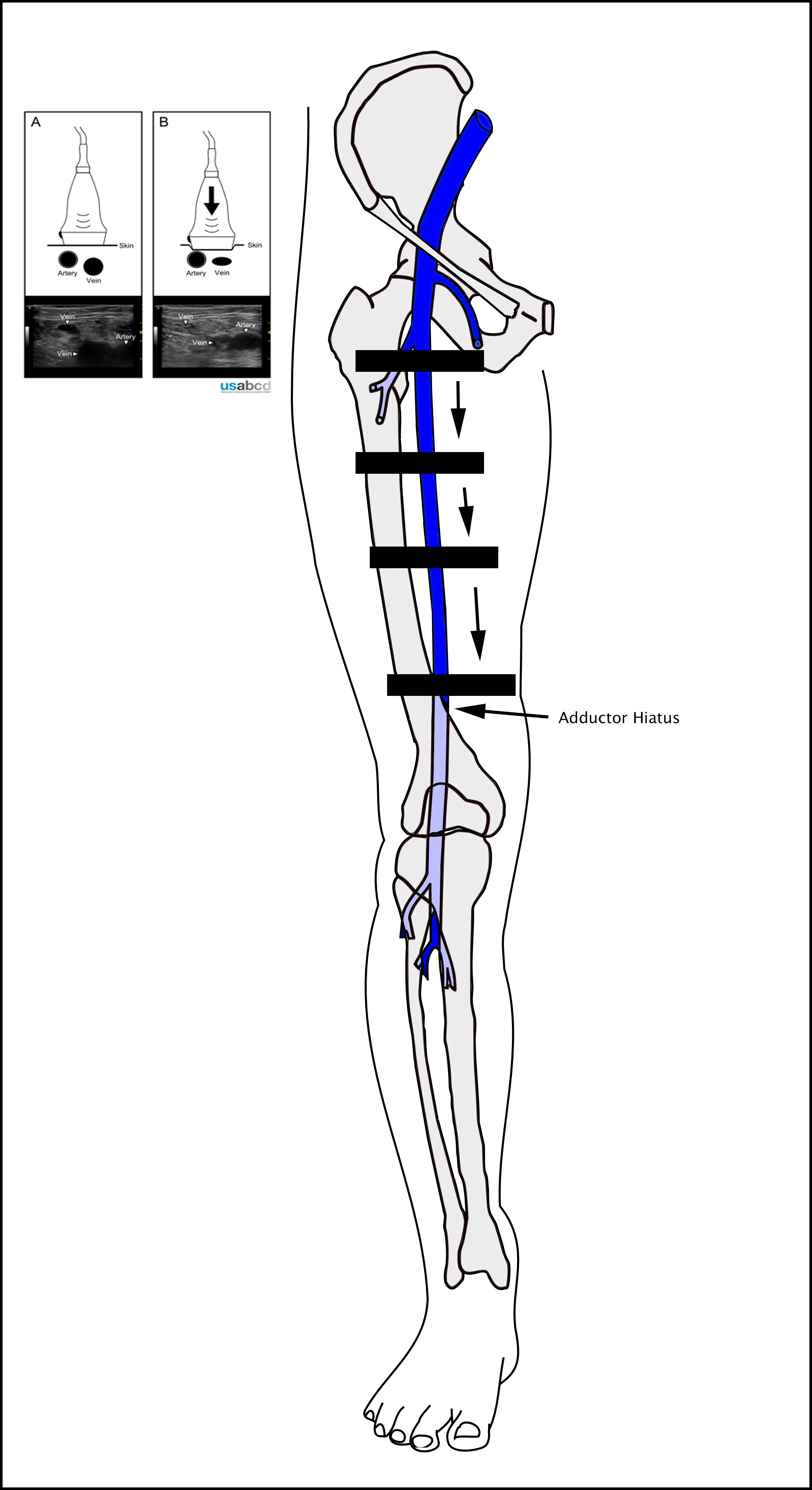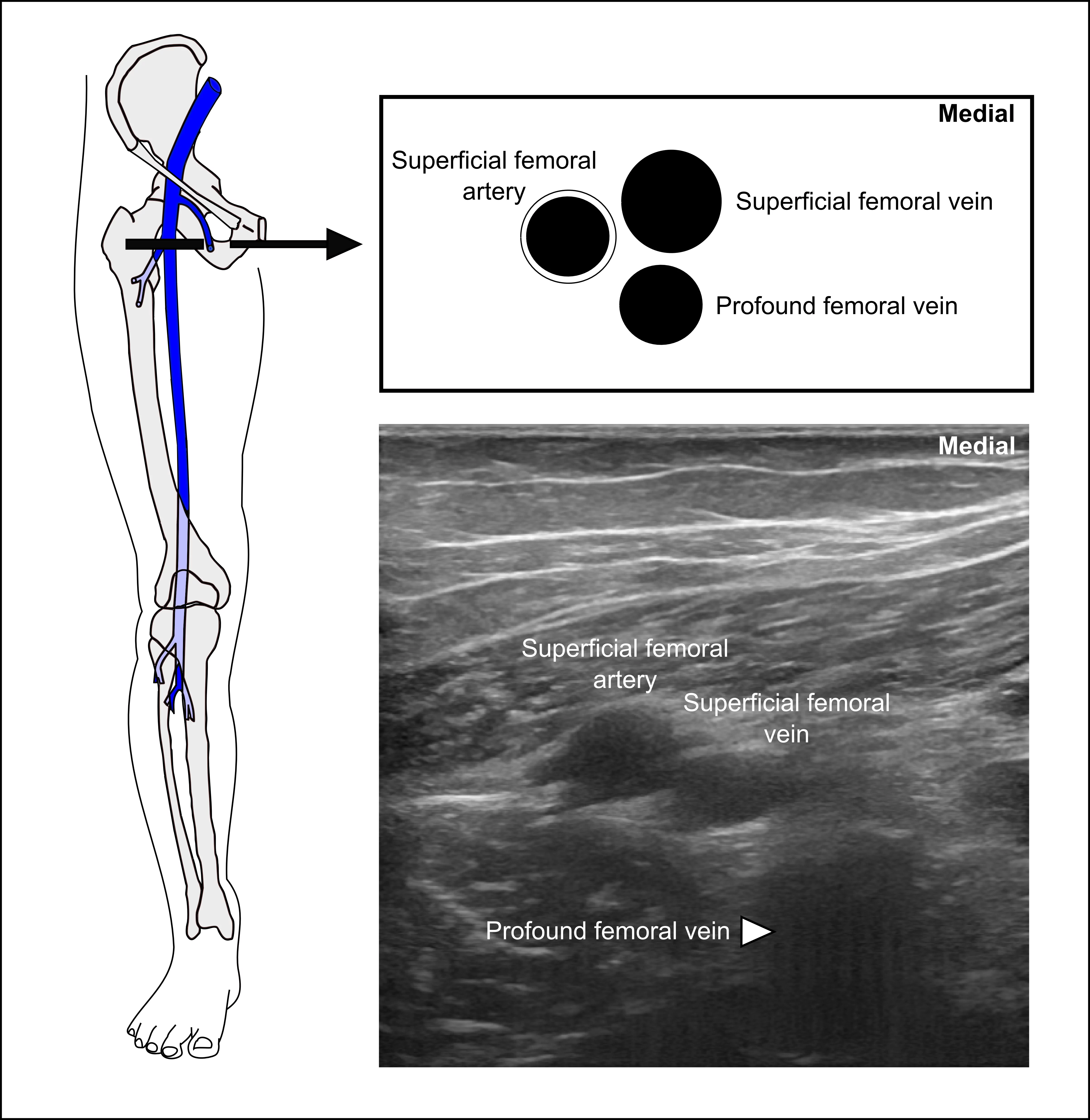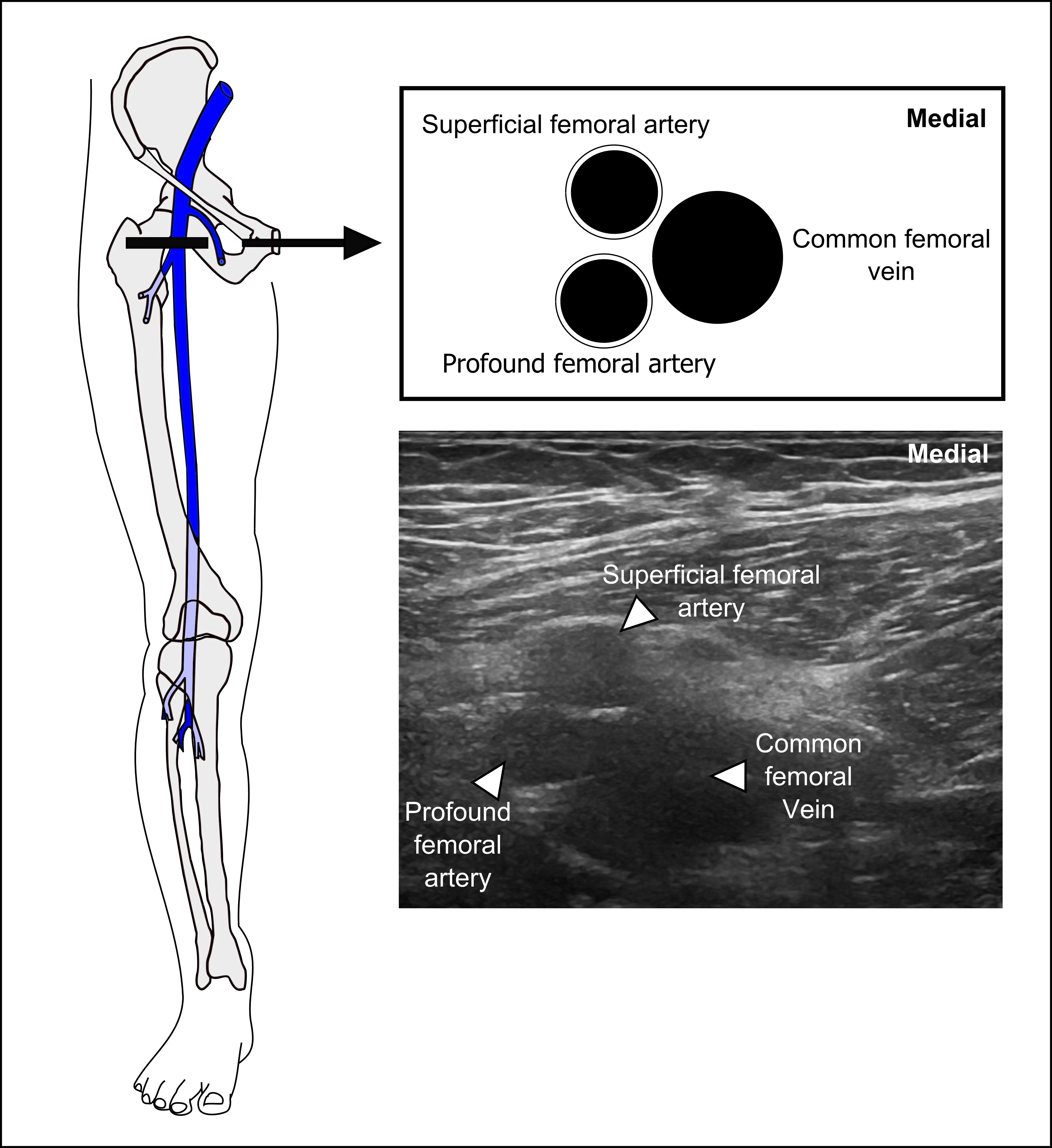The video below is very concerning for the presence of a DVT in the common femoral vein. In this clip, the physician started compression ultrasound proximal to the intersection of the greater saphenous vein and the common femoral vein.
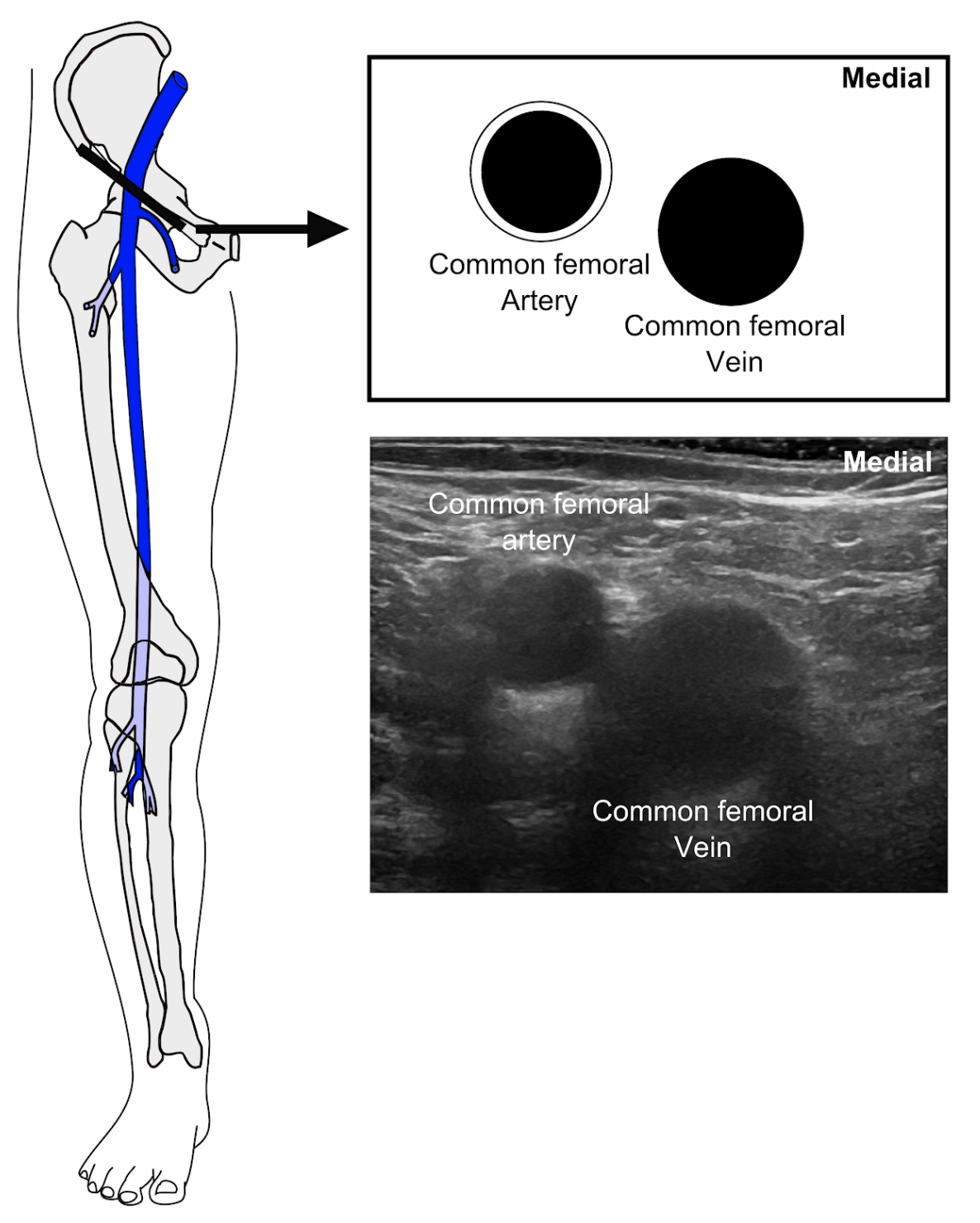
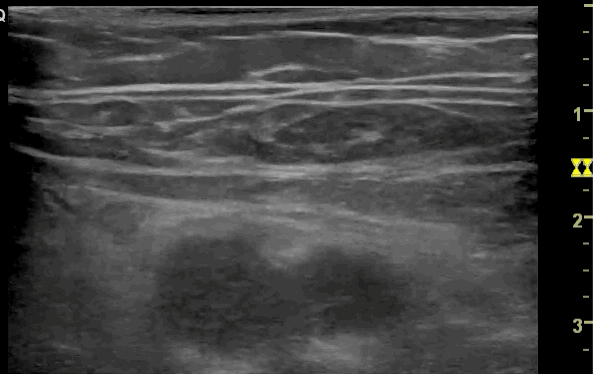
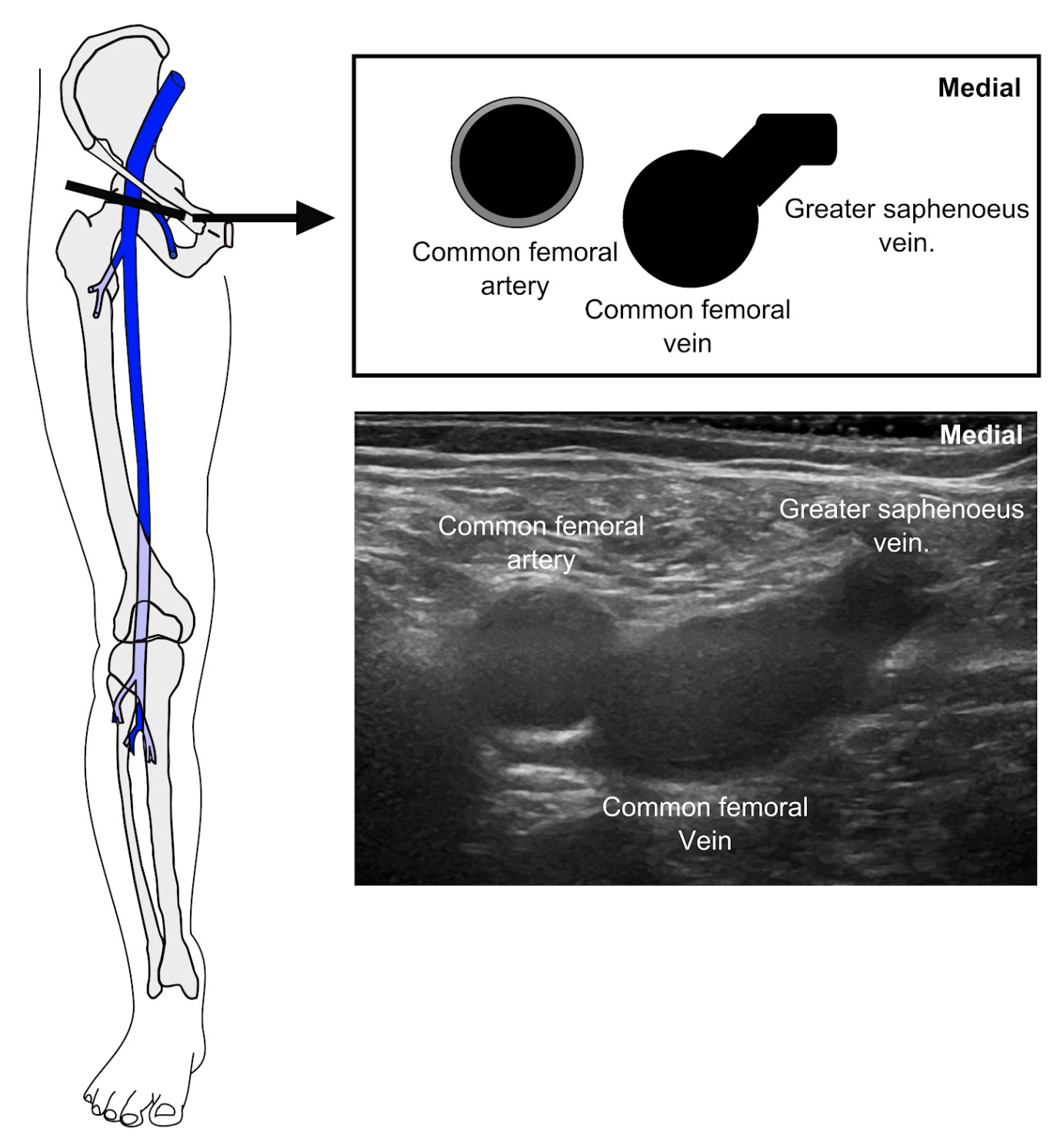
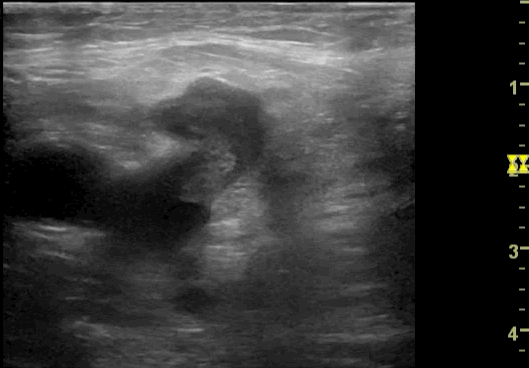
In the next video, note how the artery is somewhat compressed, but the vein does not collapse. This is highly suspicious for a DVT in the common femoral vein.
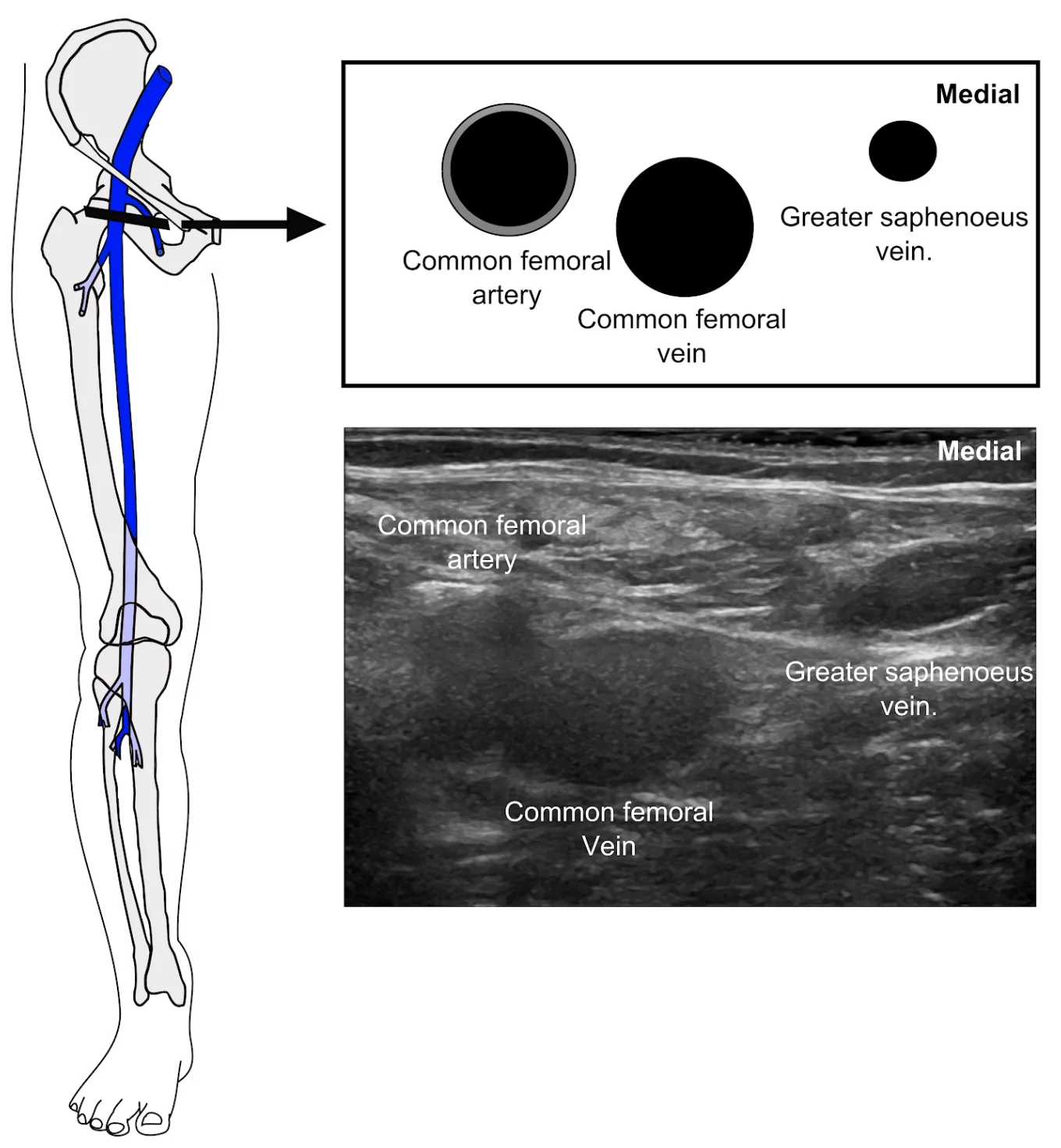
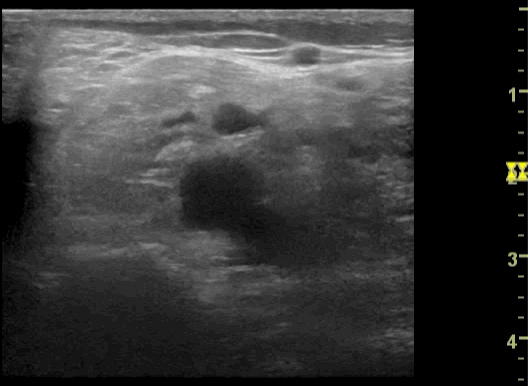
Finally, this clip demonstrates a DVT present in the femoral vein (also known as the “superficial femoral vein”). Note how the femoral artery is deformed with the pressure of compression, but the femoral vein does not collapse.
